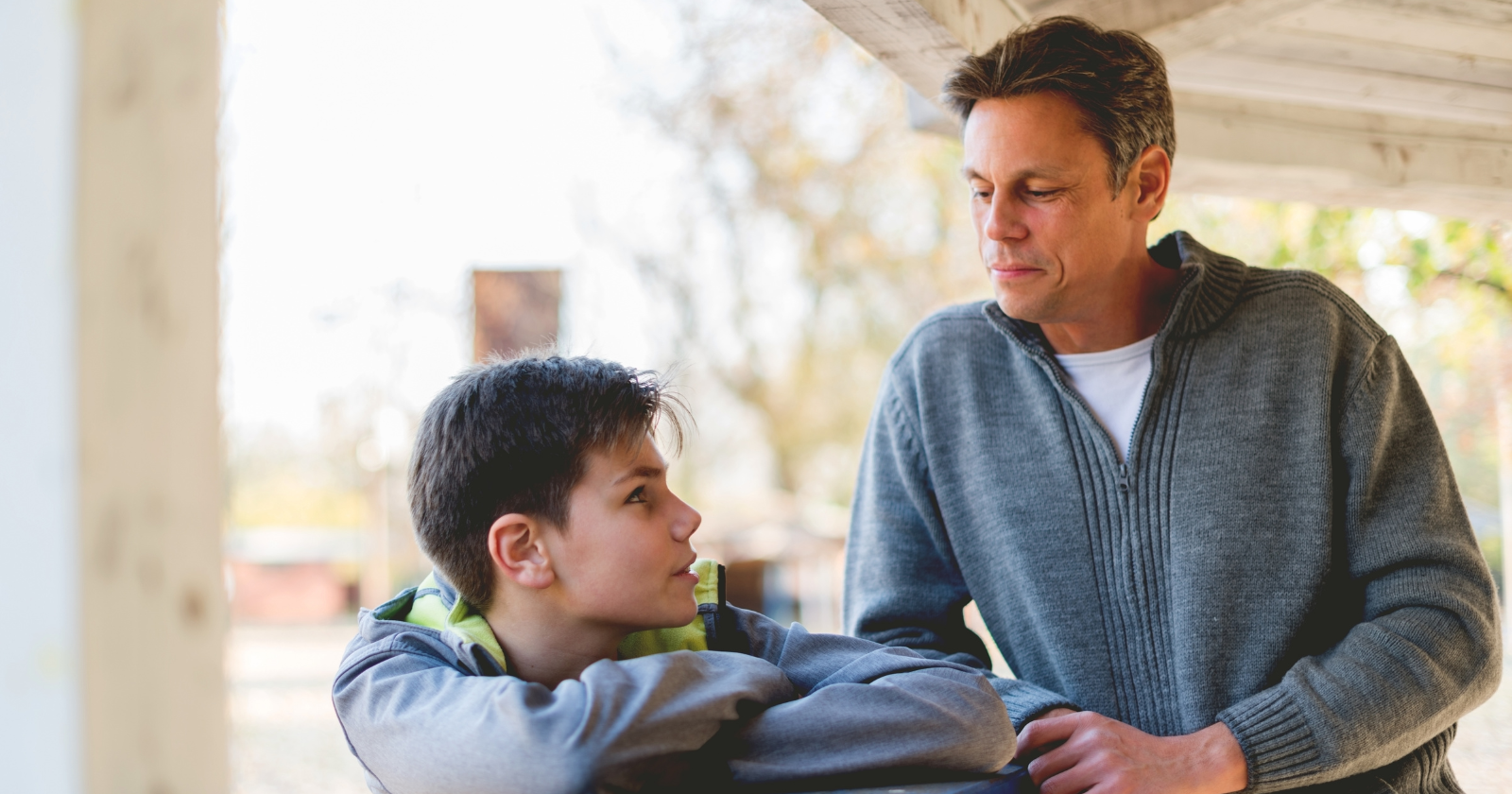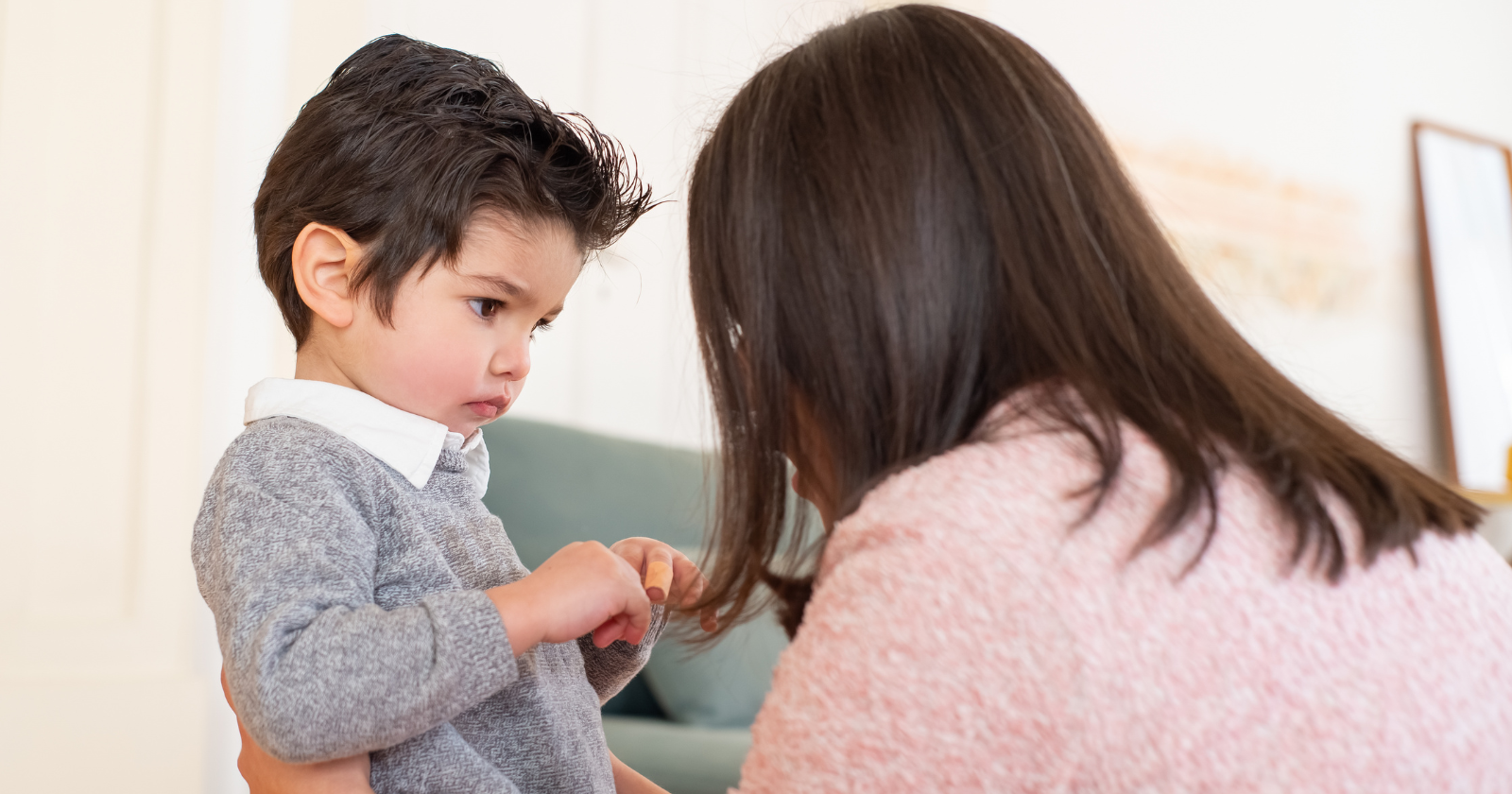Some phrases tumble out when we’re late, hungry, or on our third search for a missing shoe. I get it. But the sentences we repeat become the atmosphere our kids breathe. Over time, those words either build connection and skills—or quietly chip away at them.
I’m not chasing perfect language in my house. I’m chasing helpful defaults. Here are seven phrases I’ve retired (or am actively replacing), why they don’t serve us, and what I say instead when I want cooperation without crushing anyone’s spirit.
1) “Stop crying. it’s not a big deal.”
Tears are data. If Greta’s weeping because the paper crown she made ripped in half, that’s a big deal to her nervous system. I don’t need to rate the size of the feeling to help her handle it.
What I avoid: “You’re fine. Stop crying.”
What I try instead: name, normalize, next step. “You’re really disappointed your crown tore. That hurts. Do you want a snuggle or tape?” Psychiatrist Daniel J. Siegel’s reminder to “name it to tame it” has been a game-changer—labeling emotions helps calm the brain’s alarm system.
I’ve learned that two minutes of calm presence resolves more than five minutes of debate about whether something “should” feel upsetting. Feelings first, fixes second.
2) “Because I said so.”
I grew up on this one. It’s fast and sometimes necessary in true safety moments. But as an everyday strategy, it teaches kids that bigger voices win, not that choices have logic.
When Emil chucks a truck toward the curtains, my old line was, “Because I said so.” Now I rehearse a tiny script: boundary, reason, choice.
“Cars stay on the floor. Windows can break and that’s expensive to fix. Do you want to race in the hallway or build a garage?” I still hold the limit. He gets agency inside the limit. It’s slower for a week, then much faster for life.
3) “You’re too sensitive.”
This one sounds like coaching but lands like shame. Telling a child they’re “too sensitive” asks them to ignore their internal dashboard. Sensitivity is a feature, not a bug. With practice, it turns into empathy, discernment, and better boundaries.
What I say now: “Your feelings get big fast. That’s okay. Do you want to squeeze a pillow, stomp it out, or take five slow breaths with me?” Picking a physical regulation strategy—pressure, movement, breath—keeps us out of the “don’t feel that” dead end.
Related Stories from The Artful Parent
We also do what I call the “what helped last time?” loop. Before bed, I’ll ask, “When you felt mad earlier, what helped your body settle?” We capture one small win. Next time, we’ve got a tool ready.
4) “Hurry up!”
If “hurry up” had a soundtrack, it would be all of our nervous systems clattering onto the floor. I used to whisper it (ha) on repeat from 7:30 to 7:45 a.m. It never made us faster. Kids aren’t stalling to be difficult; their brains just don’t sprint on command.
What helps us: make time visible and reduce unknowns. I swapped “hurry up” for “first shoes, then zipper.”
One step at a time. We play the same three-song morning playlist; when the second song starts, it’s coat time. I set a soft timer and narrate what’s next: “Timer says two minutes. Do you want to race me to socks or hop like bunnies?”
We also fix the night-before system: water bottles filled, lunch boxes waiting, backpacks by the door. Systems beat scolding every time.
5) “You always…” / “You never…”

Global labels feel efficient—“You always leave your water bottle”—but they invite defensiveness and shame. They also blur the path to problem-solving. Patterns matter, but they live in specifics.
- 8 signs the AI hype is following the same path as every major tech bubble - Global English Editing
- 8 subtle signs someone is pretending to have more money than they actually do - Global English Editing
- People who grow wealthy over time usually avoid these 8 everyday mistakes - Global English Editing
I switch to observations and a choice of supports. “Three mornings this week, the bottle stayed on the counter. Want a sticky note on the door, or should we clip it to your backpack at night?” Now we’re solving the environment, not attacking the person.
When we mess up (and we do), we repair specifically too. “I snapped earlier. I felt rushed and that wasn’t fair to you. I’m working on pausing before I speak.” Kids learn accountability by watching us practice it.
6) “I’m disappointed in you.”
This one is a trapdoor. It ties behavior to belonging. What I want to say is, “You are loved; the choice wasn’t okay.” I can do that without turning my child into the problem.
When Greta says she brushed and clearly didn’t, I try: “I care about your health and honesty. Saying you brushed when you didn’t breaks trust. Let’s brush now, and tonight we’ll do it together.” We address the behavior, plan a repair, and keep her dignity intact.
Later, when nobody’s prickly, I add the why in one sentence. “We tell the truth here because trust is how we do life together.” Rules stick better when tied to values, not to someone’s worth.
7) “Don’t be scared. there’s nothing to worry about.”
Reassurance is kind; dismissal is not. “Don’t be scared” confuses a child’s internal signal (“I feel scared”) with our external assessment (“this isn’t dangerous”). We can validate the feeling and still anchor in facts.
Before the dentist, Emil’s stomach flips. Old me would say, “You’ll be fine.”
New me narrates the plan. “Your tummy feels jumpy about the dentist. New rooms can feel weird. First we sit in a big chair, then the light turns on, then the dentist counts your teeth. Do you want to hold the fox or squeeze my hand?”
As psychologist Susan David puts it, “Emotions are data, not directives”—we can notice them and still choose our next step.
When kids see us take fear seriously and still move forward, courage becomes a muscle memory, not a performance.
How I remember on messy days
I lean on three anchors:
- One breath buys me a better sentence. Truly. In that single inhale, I can swap “Stop crying” for “You’re upset.”
- Environment before willpower. If it’s happening daily, we redesign the system (bins, checklists, timers) before we redesign the child. My former corporate brain loves a process map; my mom brain loves fewer meltdowns.
- Small things often. Relationship researcher John Gottman says thriving relationships are built on “small things often”—frequent tiny bids for connection, not occasional grand gestures. Parenting is just the highest-stakes version of that. Ten seconds of eye contact and a shoulder squeeze after school usually buys us a smoother evening than any lecture.
The seven phrases, at a glance (and the swap)
- Stop crying. it’s not a big deal. → “You’re really upset. That makes sense. Do you want comfort or a fix?”
- Because I said so. → “Here’s the boundary and why. Do you want A or B inside it?”
- You’re too sensitive. → “Your feelings get big. Let’s help your body settle—pillow squeeze or deep breaths?”
- Hurry up! → “First socks, then shoes.” (Plus playlist/timer and night-before prep.)
- You always/never… → “I’ve noticed this happened three times. Want a sticky note or a backpack clip?”
- I’m disappointed in you. → “I care about you and honesty. Let’s fix the choice and plan a better way.”
- Don’t be scared. → “Your stomach feels jumpy. New things can feel weird. Here’s the plan. Do you want my hand or the fox?”
None of these require a personality transplant. They’re small pivots that add up, like putting snacks within reach or laying out clothes the night before. They won’t erase every meltdown (if only), but they will make your home feel steadier, kinder, and more collaborative.
And honestly, that’s the point for me: not perfect kids, not perfect parents—just a family culture where big feelings can land, limits are clear, and love doesn’t have to shout to be heard.



